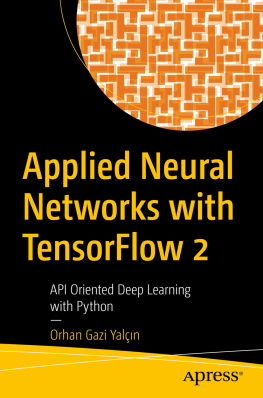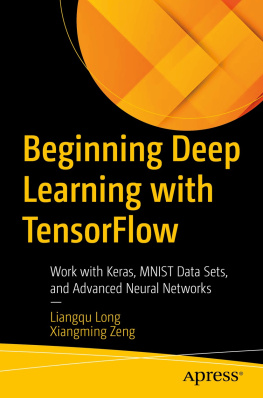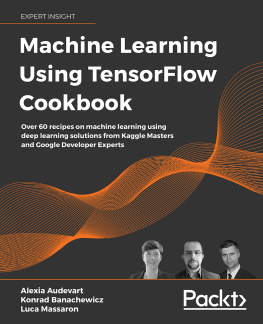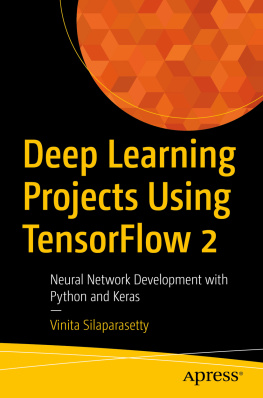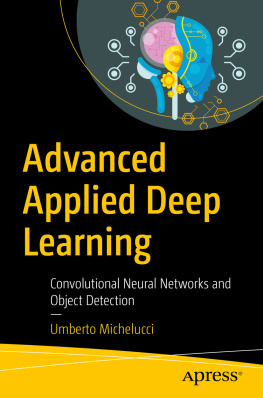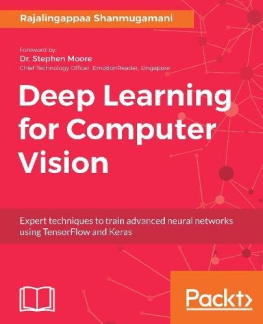Luis Capelo [Luis Capelo] - Beginning Application Development with TensorFlow and Keras
Here you can read online Luis Capelo [Luis Capelo] - Beginning Application Development with TensorFlow and Keras full text of the book (entire story) in english for free. Download pdf and epub, get meaning, cover and reviews about this ebook. year: 2018, publisher: Packt Publishing, genre: Computer. Description of the work, (preface) as well as reviews are available. Best literature library LitArk.com created for fans of good reading and offers a wide selection of genres:
Romance novel
Science fiction
Adventure
Detective
Science
History
Home and family
Prose
Art
Politics
Computer
Non-fiction
Religion
Business
Children
Humor
Choose a favorite category and find really read worthwhile books. Enjoy immersion in the world of imagination, feel the emotions of the characters or learn something new for yourself, make an fascinating discovery.
- Book:Beginning Application Development with TensorFlow and Keras
- Author:
- Publisher:Packt Publishing
- Genre:
- Year:2018
- Rating:3 / 5
- Favourites:Add to favourites
- Your mark:
Beginning Application Development with TensorFlow and Keras: summary, description and annotation
We offer to read an annotation, description, summary or preface (depends on what the author of the book "Beginning Application Development with TensorFlow and Keras" wrote himself). If you haven't found the necessary information about the book — write in the comments, we will try to find it.
You need much more than imagination to predict earthquakes and detect brain cancer cells. Become an expert in designing and deploying TensorFlow and Keras models, and generate insightful predictions with the power of deep learning.
About This Book- Cover the basics of neural networks and choose the right model architecture
- Make predictions with a trained model and get to grips with TensorBoard
- Evaluate metrics and techniques and deploy a model as a web application
This book is ideal for experienced developers, analysts, or a data scientists, who want to develop applications using TensorFlow and Keras. This rapid hands-on course quickly shows you how to get to grips with TensorFlow in the context of real-world application development. We assume that you are familiar with Python and have a basic knowledge of web application development. If you have a background in linear algebra, probability, and statistics, you will easily grasp concepts that are discussed in the book.
What You Will Learn- Set up a deep learning programming environment
- Explore the common components of a neural network and its essential operations
- Prepare data for a deep learning model- Deploy model as an interactive web application, with Flask and a HTTP API
- Use Keras, a TensorFlow abstraction library
- Explore the types of problems addressed by neural networks
With this book, youll learn how to train, evaluate and deploy Tensorflow and Keras models as real-world web applications. After a hands-on introduction, youll use a sample model to explore the details of deep learning, selecting the right layers that can solve a given problem. By the end of the book, youll build a Bitcoin application that predicts the future price, based on historic, and freely available information.
Style and approachThis step-by-step guide will explore common, and not so common, deep neural networks and show how these can be exploited in the real world with complex raw data. With the help of practical examples, you will learn how to implement different types of neural nets to build smart applications related to text, speech, and image data processing.
Downloading the example code for this book You can download the example code files for all Packt books you have purchased from your account at http://www.PacktPub.com. If you purchased this book elsewhere, you can visit http://www.PacktPub.com/support and register to have the files e-mailed directly to you.
Luis Capelo [Luis Capelo]: author's other books
Who wrote Beginning Application Development with TensorFlow and Keras? Find out the surname, the name of the author of the book and a list of all author's works by series.

![Luis Capelo [Luis Capelo] Beginning Application Development with TensorFlow and Keras](/uploads/posts/book/119020/thumbs/luis-capelo-luis-capelo-beginning-application.jpg)

